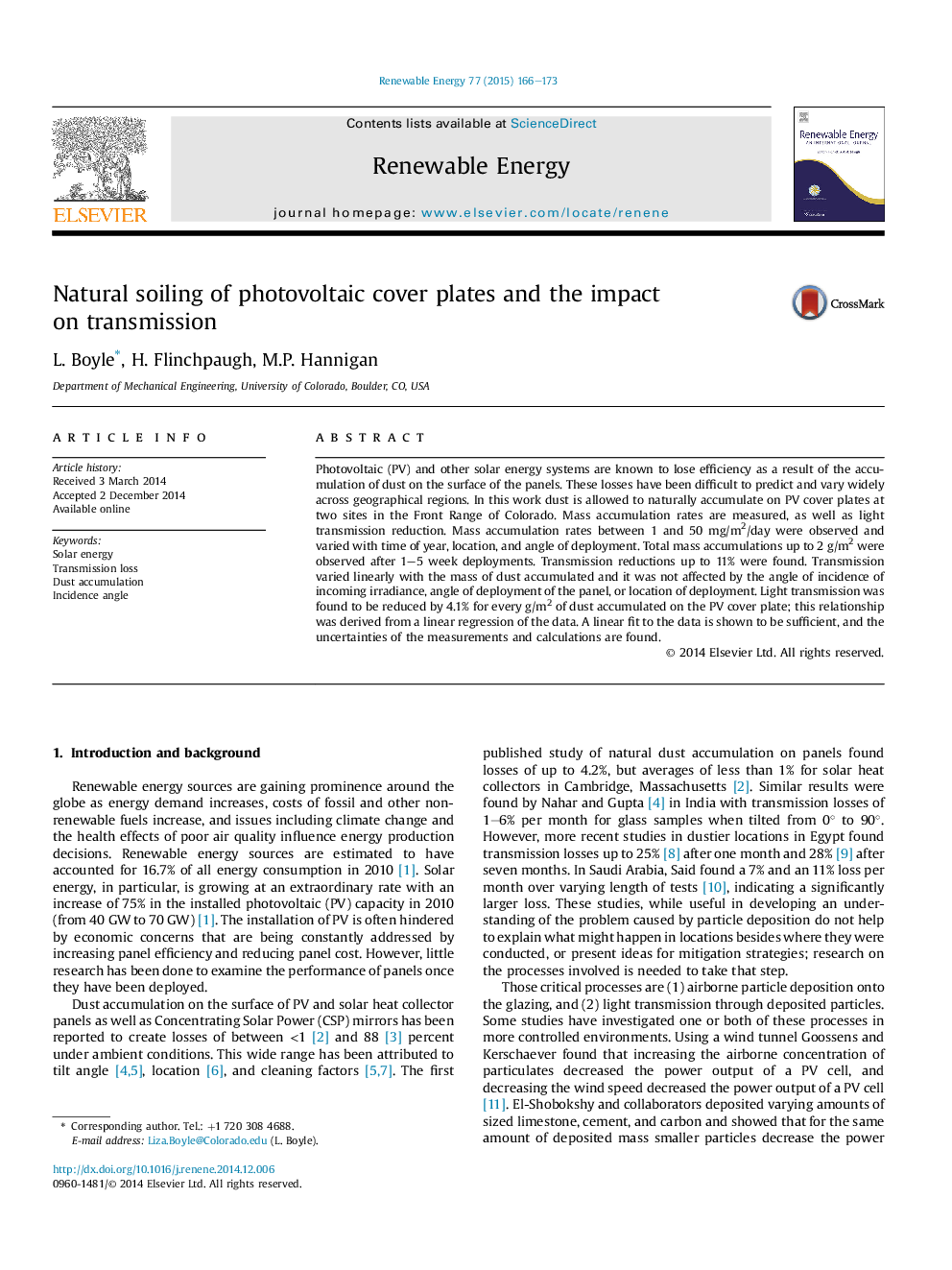| Article ID | Journal | Published Year | Pages | File Type |
|---|---|---|---|---|
| 6767350 | Renewable Energy | 2015 | 8 Pages |
Abstract
Photovoltaic (PV) and other solar energy systems are known to lose efficiency as a result of the accumulation of dust on the surface of the panels. These losses have been difficult to predict and vary widely across geographical regions. In this work dust is allowed to naturally accumulate on PV cover plates at two sites in the Front Range of Colorado. Mass accumulation rates are measured, as well as light transmission reduction. Mass accumulation rates between 1 and 50Â mg/m2/day were observed and varied with time of year, location, and angle of deployment. Total mass accumulations up to 2Â g/m2 were observed after 1-5 week deployments. Transmission reductions up to 11% were found. Transmission varied linearly with the mass of dust accumulated and it was not affected by the angle of incidence of incoming irradiance, angle of deployment of the panel, or location of deployment. Light transmission was found to be reduced by 4.1% for every g/m2 of dust accumulated on the PV cover plate; this relationship was derived from a linear regression of the data. A linear fit to the data is shown to be sufficient, and the uncertainties of the measurements and calculations are found.
Related Topics
Physical Sciences and Engineering
Energy
Renewable Energy, Sustainability and the Environment
Authors
L. Boyle, H. Flinchpaugh, M.P. Hannigan,
